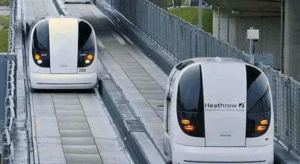Meta is working on a more sophisticated version of its smart glasses with an integrated screen and hand-gesture controls.
According to insiders, the new smart glasses, code-named Hypernova, may be released by the end of 2025.

Meta’s Smart Glasses: How Does It Work?
In comparison to the Ray-Ban Meta Wayfarer model, which retails for $329, the price is anticipated to start above $1,000 and possibly reach $1,400.
Users will need to look down to view notifications and other content because the built-in screen will be located at the bottom-right of the right lens.
Though they won’t have an app store, Meta will maintain control over the functionality of their Hypernova glasses, which will show notifications from Messenger and WhatsApp.
The primary features, such as taking pictures and videos, playing music, and interacting with AI assistants, will be comparable to those of existing Meta smart glasses.
Although Hypernova chooses a bottom-right placement, the design concept is similar to Google Glass (2013), which used a tiny projector for image display.
Unlike Google Glass, which had trouble getting traction, the aim is to make the glasses fashionable and popular.
Since October 2023, 2 million pairs of Ray-Ban Meta glasses have been sold, according to EssilorLuxottica, the company that makes them.
By 2026, Meta wants to sell 10 million smart glasses a year, but the pricey Hypernova model might not make a big difference in reaching this goal.
A Two-Screen Model for Both Eyes Is Anticipated in 2027
According to reports, a two-screen model for both eyes is anticipated in 2027.
Users will be able to interact by touching the stems of the glasses thanks to the capacitive touch-sensitive arms that Meta is designing.
As a backup control mechanism, a different wristband known as Ceres is being developed.
The Orion AR glasses from Meta, which were dubbed “the most advanced AR glasses” in September 2024, are not the same as the Hypernova model.
While Hypernova makes AR elements less noticeable to outside observers, Orion glasses place them in the center of the field of vision.
A key improvement for the Hypernova will be a much better camera, with quality comparable to a smartphone’s two-generation leap.













